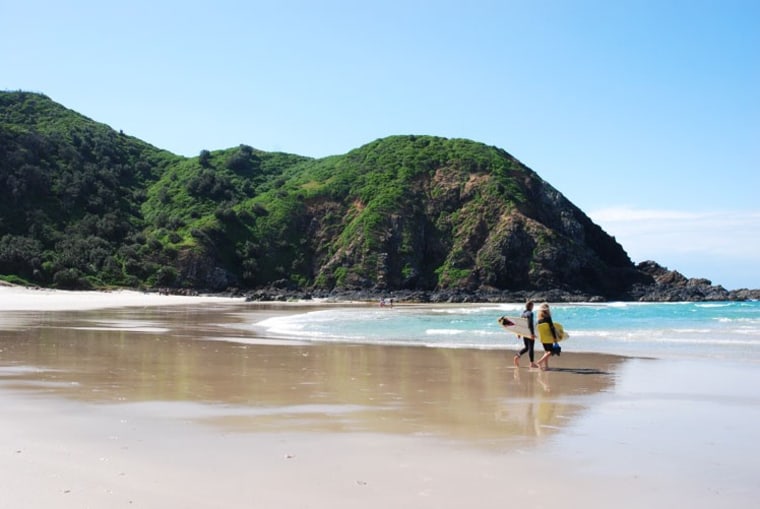If the ocean is a shark’s vast marine buffet, then humans are the Brussels sprouts — we’re far from the favorite. But that’s no consolation to a swimmer like Kori Robertson, who was attacked in early 2011 while wading in the ocean off the coast of Texas. A 12-foot shark took a bite of her thigh then quickly spat her out.
Sharing the world’s waterways with sharks means that occasionally we bump into one another — and the encounter doesn’t always end well for us humans. But don’t let that keep you from the water: shark attacks are very rare. Still, some beaches — for various reasons — attract more sharks than others.
To get some perspective and uncover the worst beaches for shark attacks, we culled data from news reports, the International Shark Attack File, and the Global Shark Attack File. Globally, there have been 447 fatal shark attacks and 2,320 nonfatal incidents since 1845. The number of reported shark attacks increased worldwide in 2010, with 79 attacks, up 25 percent from 61 the prior year, according to the International Shark Attack File. That said, in the U.S., the last decade has seen 230 deaths from dog bites and only eight from sharks.
“For an animal so large, sharks are remarkably cautious,” says Ralph S. Collier, president of the Shark Research Committee and author of "Shark Attacks of the Twentieth Century." “They use all their keen senses to determine if something is food. The last thing they do is put it in their mouth. When they realize it’s of no interest they release it,” he says.
The three most likely sharks to attack a human are bull sharks, great white sharks and tiger sharks. Different species have different personalities, and getting inside their brains is the first step in knowing which beaches should be avoided.
“Great white sharks spend most of their time in the open ocean,” explains Marie Levine, executive director of the Shark Research Institute and archivist for the Global Shark Attack File. Bull sharks love brackish river deltas and have been found as far as 60 miles inland, while tiger sharks are doggedly curious. They feed on carrion, turtles and garbage, and are therefore most likely to give us an exploratory bite.
Two rules of thumb: never swim alone and, if you’re actually attacked, take aim with repeated hard blows to the eyes or gills, not the nose.
It’s no coincidence that the most dangerous beaches are the ones where tourists and locals flock to swim, surf and snorkel; more people equals more potential for attacks. Some beaches, however, are particularly infested.
More from Travel + Leisure
